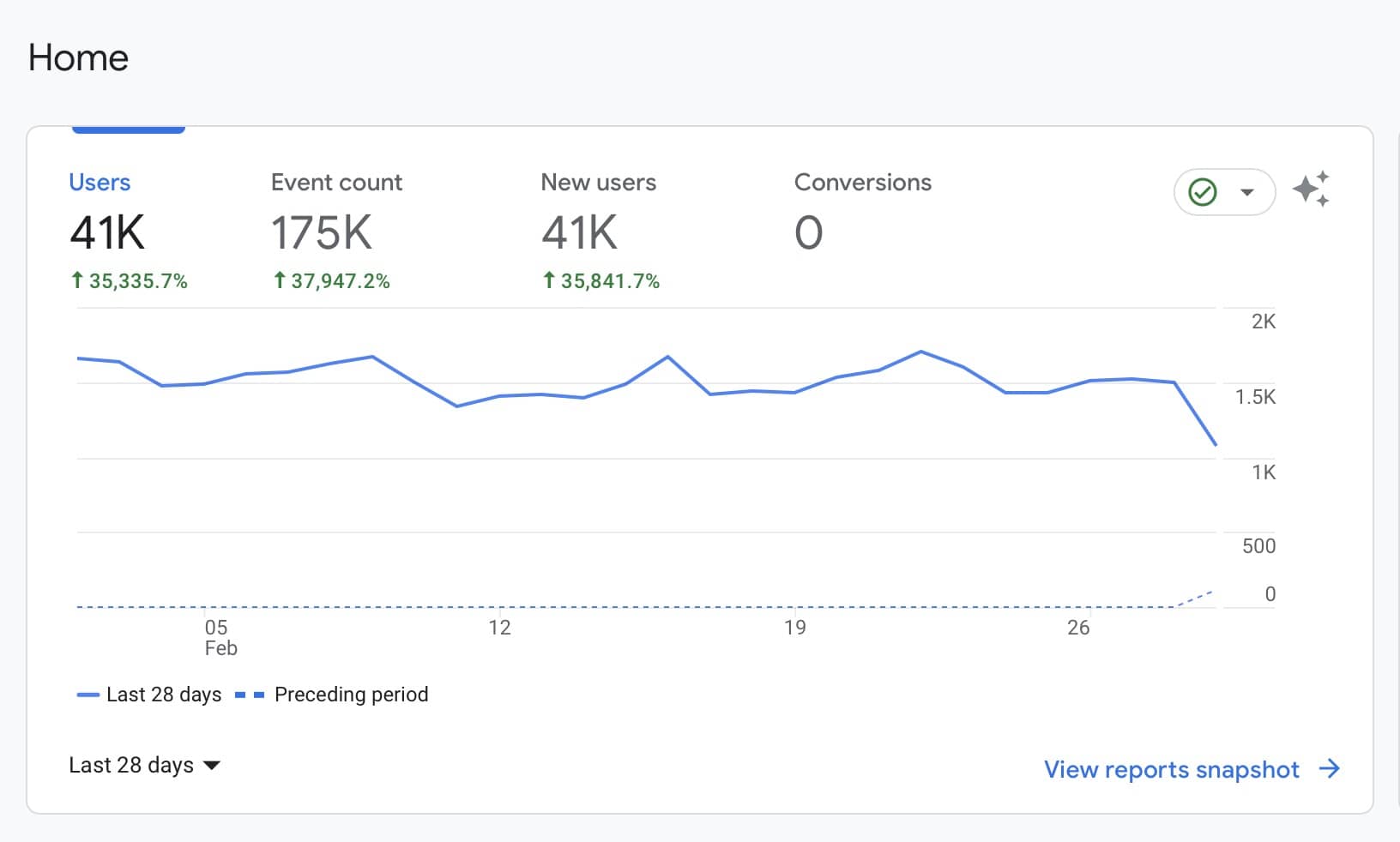Learn everything about unique visitors in Google Analytics 4, including their definition, identification, limitations, and where to find the data.
Google Analytics 4 measures website visitors differently than Universal Analytics.
The new event-based data model changes the way in which Google Analytics shows returning and new users on the main tool’s interface.
This changes the definition of unique visitors in Google Analytics 4, but don’t worry – we’ll show you everything you need to know about unique users visiting your site right in this guide.
What Are Unique Visitors?
Unique visitors are defined as the number of unduplicated individual users who visit your website over the course of a specified time period.
Google Analytics unique visitors are one of the most important web analytics metrics and shows you insights regarding the growth and evolution of your site’s audience.
An increase in the total number of unique visitors means that your site is being accessed by new people over a certain time period.
This information can be used to determine the engagement of your site content, the effectiveness of marketing campaigns, and user behaviour based on traffic sources.
Official Google Analytics Definition of Unique Visitors
Google defines unique visitors as the “total number of unique users who logged an event.”
Back in Universal Analytics (compare UA to GA4 metrics here), the “Total Number of Users” metric was measured as a whole based on unique sessions (users that had at least one session within the selected date range).
In GA4, user visits can only be considered “unique” if:
- A first-party cookie is stored on the user’s browser.
- They trigger an engaged session event (stay on a web page for 10 seconds or more, visit another page, or trigger a conversion event).
How Does Google Analytics Identify Unique Visitors?
Google Analytics 4 determines unique visits by storing browser cookies when they open a session on your website.
GA4 cookies store a client ID in a first-party cookie called _ga. This cookie assigns an identifier to the new session, which helps the tool distinguish between a new user and a returning visitor.
Although the default expiration time of the ga cookie is 2 years, it is possible for web owners to change these parameters in order to comply with privacy regulations imposed by government authorities.
It is worth noting that some browsers, such as Safari, enforce limitations on the lifespan of cookies if users do not return to a certain website.
Unique Visitors vs New Users
Google Analytics 4 allows you to track unique visitors to your website through cookies, but what if one user comes back? Will they be tracked as a unique visitor?
No, as long as the first-party cookie with its unique identifier is still stored on their browser.
New users in Google Analytics 4 are the total number of users who launch or open your website for the first time. In order to classify website visitors as unique users, GA4 takes the following factors into account:
- The user need to have a new unique user ID stored through cookies.
- A first_visit or first_open event needs to be triggered.
Both conditions must be met in order to count users as new visitors.
If, for instance, a user triggers a first_open event, but their user ID has been already stored by GA4 in the past, they will be counted as a returning user.
Limitations of Unique Visitors Data in GA
Google’s way of measuring unique visitors is not perfect. Returning users can be counted as unique visitors sometimes, which causes inaccurate data reporting.
In the following scenarios, Google Analytics 4 will encounter anomalies while trying to measure unique visitors:
- Ad-blockers and privacy-focused browsers: visitors who employ ad-blockers and different browsers with privacy-focused features will not appear as Unique Users in your GA4 dashboard. Fathom Analytics is a Google Analytics alternative that is blocked by less ad-blockers and browsers than GA.
- Cross-device cookie tracking: if the same user accesses your website through multiple devices or a different operating system, it will be counted as a new unique visitor.
- Multiple individuals using the same device: if more than one person uses a single device to see your website, they will count as a single person towards the Unique Visitors web metric.
- Incognito browsing modes contribute to inaccuracies: Incognito Browsing Modes, such as Google Chrome Incognito Mode, causes users to be seen as new users, even if they are returning visitors.
- Local laws/regulations that make data collection limited: privacy regulations in some countries establish that websites can only store cookies if users give their consent. Google Analytics 4 has a cookie Consent Mode, which provides users with the option to get their user sessions tracked by cookies or not.
Where to Find Unique Visitors in Google Analytics 4
You can see how many unique visitors your site gets simply by logging into your Google Analytics account.
After you log in to Google Analytics account, go to the main Home Tab. There, you will see a graphic that shows you both Users and New Users.
“Users” refers to each unique visitor your website has obtained during the past few days.
Remember that you can change the date range of the graphic to get monthly, weekly or daily insights into the Unique Visitor metric.

If you have recently made the switch from UA to GA4, remember that the tools do not track unique visitors equally, even if the term “Users” appear the same.
GA4 tracks unique visitors based on events, whereas UA tracks unique visitors based on sessions.
This is all you need know about unique visitors concepts and definitions in Google Analytics 4. Keep in mind that unique visitor metrics should be analyzed, interpreted and checked based on your own website’s audience and goals.
FAQ
Are Unique Visitors Same as Unique Pageviews?
No, unique visitors and unique pageviews are not the same. Unique pageviews are the number of times that certain web pages have been viewed by a unique visitor over a certain time period. This means that if a unique visitor sees 3 different pages, Google Analytics 4 will count it as 3 page views, but only a single Unique Page View.
Paul Jarvis is the co-founder of Fathom Analytics and the co-host of the Above Board podcast.
Content retrieved from: https://usefathom.com/blog/unique-visitors-google-analytics.





